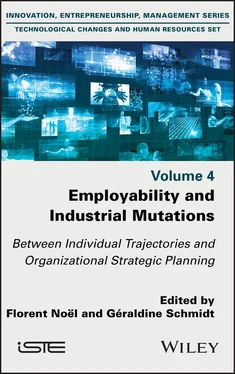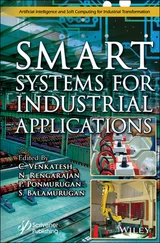At the end of these first two parts, the reader will hopefully have a better understanding of what is meant by employability development. The third part describes concrete management systems set up by companies, sometimes in collaboration with labor market actors, to develop employability. These examples show that employability is not an attribute of individuals, but that it is the result of approaches to identifying and enhancing skills that explain the concrete dynamics of careers. Being employable is a question of collective judgment which requires coordination between the actors involved: individuals and employers at least . In Chapter 7, Anne-Laure Gatignon-Turnau and Séverine Ventolini discuss the simulation-based recruitment method developed by Pôle emploi, which makes it possible to dispense with the curriculum vitae that penalize the long-term unemployed and those who are furthest from employment. Putting workers in a situation makes it possible to validate the possession of skills despite the absence of validated training or validated experiences. It can be a way for companies to broaden their sourcing to compensate for possible labor shortages. This way of organizing the meeting of labor supply and demand ultimately makes it possible to establish a dialogue between employers and new employees and has the effect of strengthening commitment to work. Chapter 8is in the same vein, but for different categories. Thierry Colin, Benoît Grasser and Fabien Meier present the skills enhancement approach developed in an aeronautics company to recruit for production positions with high requirements of reliability and quality. What’s more, these positions involve new products and technologies that do not yet exist. A fortiori , there is no ad hoc training leading to them. They clearly show that employability is co-constructed in the interaction between an individual and an organization through manpower pre-qualification mechanisms based on very general skills, followed by training and tutoring mechanisms. They also stress the fundamental role of work instructions and teaching tools that make learning, work, employment and thus employability possible. Employability is thus decided in the uncertainty during the recruitment process and then in the on-the-job training process. Risk and investment are at the heart of the approach. At the other end of the employee’s “life cycle” in the company, Ève Saint-Germes offers, in Chapter 9, a dive into a world that is too often overlooked: that of outplacement units. Here again, employability appears to be the result of coordination between actors with different constraints: individuals looking for work after being made redundant, the employer who makes them redundant, the redeployment unit, the joint committee monitoring the redundancy plan and so on. We find the idea that employability is equipped with tools and gives rise to intense negotiations on measurement systems, the categorization of individuals leading to orientation towards a particular support measure, budgets and so on. Employability is not given, it is socially constructed. Chapter 10closes this section. Sara Dotto, Patrick Gilbert, Florent Noël and Nathalie Raulet-Croset attempt to identify typical configurations in which production requirements, ways of defining the qualities of work and management systems for assessing and developing employability, are brought into line. The figure of the multi-skilled, available and opportunistic worker is only one model among others, alongside the worker with certified skills modeled on the stable requirements of standardized production or the worker included in networks within which the shared culture and affinities necessary for collaborative work are developed.
The approaches presented in the third part are based on structured and deliberate management systems: building tests, organizing training, monitoring the development of skills and so on. But employability is also built in the work situation in interactions with management and peers, in the learning of professional gestures, behavioral codes and the discovery of desirable opportunities. It is the whole organization that must be empowering. The contributions in the last part of the book return to the ideas developed upstream by presenting examples of companies undergoing change and tension, in which the work situation has a positive or negative influence on the employees’ career path. The transformation of the SAE group’s factories towards a factory of the future model, presented by Emmanuelle Garbe and Jérémy Vignal in Chapter 11, raises interesting questions about the employability of operators in the current context of digital transformation. Technological changes have led to fears of a polarization of the workforce, with super-operators, on the one hand, who are called upon to increase their skills in order to carry out the tasks of controlling and managing installations, and less qualified operators on the other, who may fear that their work will be de-skilled with them becoming servants of the machine. No one has been able to make valuable predictions that would help to cope with uncertainty. Dealing with these transformations is a challenge that HR professional can hardly meet. But the other actors in play – workers and managers – can build their own solutions. Two illustrative cases are proposed in Chapters 12and 13: the local managers of a large French group, followed like a shadow by Anne-Laure Delaunay, may also be concerned about the rapid technological changes they are experiencing. It is true that the proliferation of hardware tools (smartphones, tablets) and work applications may, at first glance, be perceived as a threat to jobs and skills. However, it generates opportunities for organizational tinkering, which are all the more fruitful as the tools are plastic and managers can appropriate them and define their use. In the end, the modernization of tools contributes to an increase in skills and the development of expertise that is particularly sought after internally and externally. The integration enterprise studied by Emmanuelle Begon and Michel Parlier is also constrained by production requirements. It is by exposing its employees to high-quality requirements, by involving them in participative and reflective management processes, and above all by not renouncing anything that an employer can and should expect from his employees that reinforces the feeling of efficiency in its fragile employees, develops their employability and remobilizes them towards sustainable employment. In this case, the very organization of work professionalizes the employee and enables him or her to “fully be a worker”.
We can see that talking about employability means thinking about cooperation between actors with different logics: public systems, HRM approaches, individual strategies and so on. All these actors have their role to play and their responsibilities to assume in solving fundamental problems: the fight against unemployment, labor shortages in “shortage” occupations, inclusion and emancipation of individuals, management of change, professional trajectories.
While these issues are at the forefront of the media and the daily life of organizations – redundancy plans, technical change, new forms of employment relationship – they have not yet found clear answers, either in research or in the practices that would form the basis of the professional activity of human resources managers or their union partners. Beyond the local experiments which this book has attempted to report on, no one really knows how to address these issues, negotiate employment and adjust skills. Each unique situation gives rise to its own unique management methods. The solutions found here and there are often presented as the result of encounters or opportunities that cannot be reproduced. These sensitive subjects are euphemistically described and it is often preferable to remain discreet about the solutions found, even when they are innovative, because discussing them would mean revisiting the often painful problems that gave rise to them or revealing certain aspects that could not be resolved in an honorable way. In short, learning remains rare, and the actors often “tinker” in the complexity of situations combining business strategies, economic constraints and human realities that are difficult to reconcile.
Читать дальше












